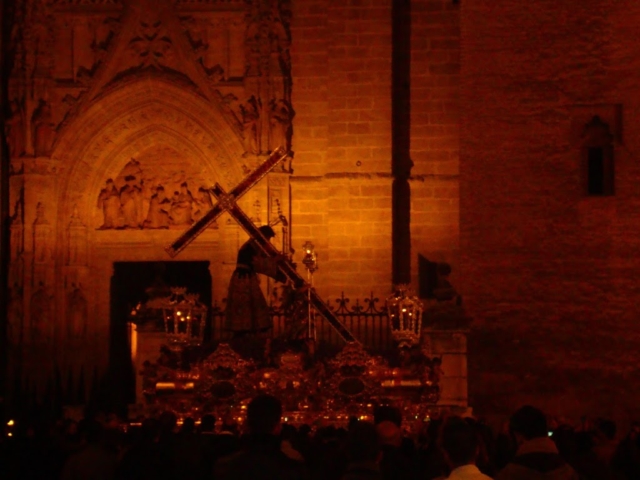 |
| Jesus del Gran Poder, one of the most well-known figures of Chirst in Sevilla exiting the Cathedral during the procession in the wee hours of the morning on Good Friday. |
Holy week in Sevilla is a big deal. Actually, that’s an understatement. Holy week takes year long preparation, participation of thousands of Sevillanos, not to mention the hundreds of thousands of Andalucíans who fill the narrow streets and the thousands of tourists that come from all over the world to see Sevilla’s passion. People pack in to the narrow streets, getting there hours early, with packed food, sunflower seeds, water, beer–in some ways it feels like a sporting event. In every bar on TV is the live coverage with commentary. Indeed, it’s followed with the enthusiasm of a large sporting event, one that takes a full week, yet with a much more solemn tone.
My Grandma, at age ninety-something, couldn’t remember much, but she remembered her trip to Sevilla decades earlier during Semana Santa. When I would call her the last several months she was alive, she could remember that I was either in Spain, or going to Spain, or had just been there (all of which were somewhat true.) So she would tell me about her trip to Sevilla because all she knew was that story somehow related to me. Mostly she seemed to remember the crowded streets, being careful of pick pockets, and things like that. Regardless, being present in Sevilla that week stuck with her, when many other things had not. She would tell me about Semana Santa several times in one phone coversation, because she did not realize she had just finished telling me the story.
So what is Semana Santa?
Basically, Semana Santa is when pasos or large floats of Jesus Christ or the Virgin Mary are taken from the church or chapel they reside in all year to the Cathedral in the center of Sevilla, then back again to their church. Each procession is organized by a different Catholic layman’s brotherhood or hermandad. The standard order of the procession is as follows:
1) Cruz de guía (guiding cross)
Each procession begins with a guiding cross.
| Here is the cruz de guía of the hermandad Los Servitas in the Plaza just outside the chapel. |
2) Nazarenos
These are the members of the hermandad that wear a capirote or pointed hat and long gown and walk in the procession as an act of penance. They walk in silence and are often carrying tall wax candles that are lit at night. The crowds of people watching the procession continue talking and chatting as the nazarenos pass. The pointed hat is meant to bring their penance closer the heavens and god and the outfits are meant to make them anonymous, so that they are doing the act of penance without any acknowledgement. It is only as of 2010 that women were legally allowed to participate, although there is quite a bit of speculation that women have been participating in the processions for years earlier because of the anonymity of the attire.
To keep order among the nazarenos, there are diputados de tramo or section chiefs. Each section is divided by some kind of pennant at its beginning. Depending on the size of the hermandad there can be anywhere from a few hundred to a few thousand nazarenos. Some processions are so huge, it takes about an hour and a half for the beginning of the procession to the end to pass one point!
Each hermandad has a unique color and symbol.
| The insignia of Los Servitas is a heart with seven swords piercing the heart and a crown above. Their official name is: Real, Ilustre y Venerable Hermandad de Nazarenos y Primitiva Cofradía Servita de Nuestra Señora de los Dolores, Santísimo Cristo de la Providencia, María Santísima de la Soledad y San Marcos Evangelista de Sevilla. |
3) Next is a group of acolytes that carry incense. During the week all of Sevilla smells like church incense, with each brotherhood having a specific scent, or if a procession hasn’t passed through a street, it smells like orange blossom or azahar (the spanish name is so much prettier!) from the blooming orange trees everywhere. I wish there were some way to share that via a blog!
4) The Paso itself, or the float of Jesus and then the Virgin.
The crowds fall completely silent when the floats pass. Jesus or a crucifix always comes first, followed by more nazarenos or penitentes, which are nazarenos who are carrying large wooden crosses and do not wear the pointed cap.
Here are two short video snips:
 |
| Penitentes. |
After the penitentes comes the Virgin. Most of the floats during Semana Santa are considered antiques or works of art. They can be hundreds of years old and cannot be taken out in the rain because they are made of wood and are at risk of becoming severely damaged by water. For that reason, a paso can be entirely cancelled if it is raining, which happened on Friday when not a single paso left. If it begins to rain after the procession has begun, the pasos must seek shelter in the nearest church or chapel.
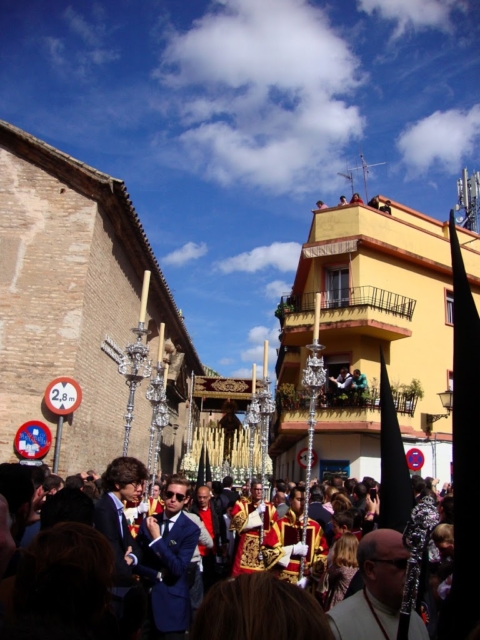 |
| La Virgin de la Soledad (Virgin of Loneliness). |
 |
| Check out the back of her dress; it’s massive and all embroidered in gold. |
The floats are carried by at least two dozen or up to 54 costaleros (person who carries goods/porter), depending on the size of the float. They are under the float, hidden from view by a curtain, and are guided by the voice of a guide and the sounding of a hammer.
Here’s a video snippet of the Esperanza de Triana Virgin being lifted by the costaleros. There is no music because she is returning to her church a day late after taking shelter from the rain. Music only accompanies the pasos if their trajectory is not altered by rain.
5) Music
Each float, is followed by a band. There are a few exceptions to this, particularly the hermandad known as El Silencio (The Silence), for obvious reasons….
Other important parts of Semana Santa:
Saetas. These are songs sung a cappella to the floats. The procession stops for the saeta, and as the song culminates the band begins to play softly. I was lucky enough to catch two saetas. Here is the video snippet of the middle of it and another of the end of it:
La Madrugá. This takes place during the very early morning hours of Good Friday. I stayed up all night, staked out with some friends at the back of the Cathedral, where all the pasos exit and begin their path back to their churches. There, we caught three whole pasos, El Silencio, El Gran Poder, and La Macarena. We met up around 1:00am, stayed there until about 6:30am, then headed back to my neighborhood, ate a breakfast of buñuelos, or doughnuts which are popular at any time of day during Semana Santa, and then I went to bed. Here are some of the photos I took that night:
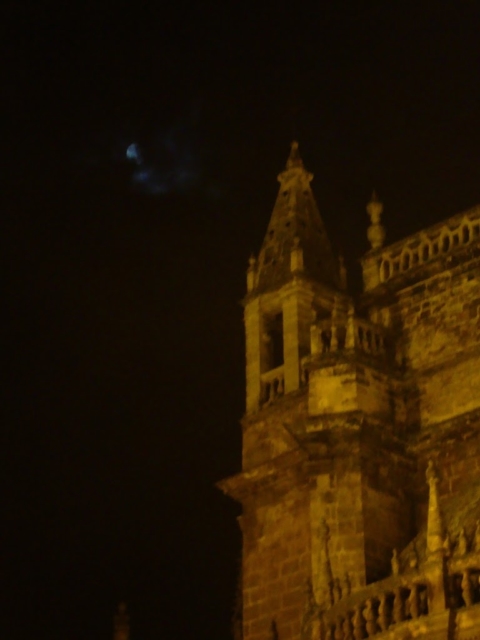 |
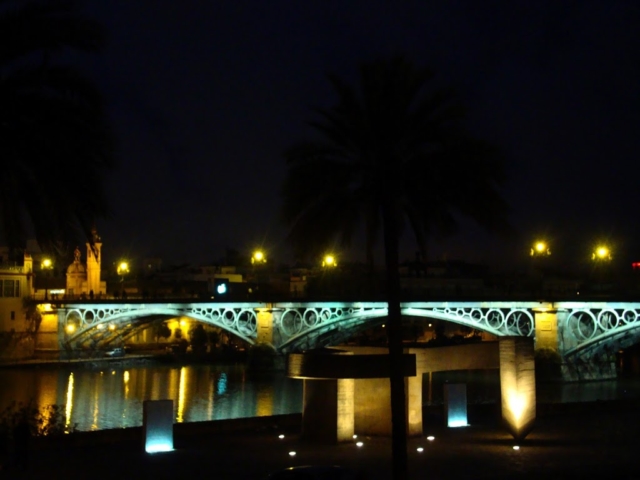 |
| The Triana Bridge at dawn. |
 |
| Buñuelos! |



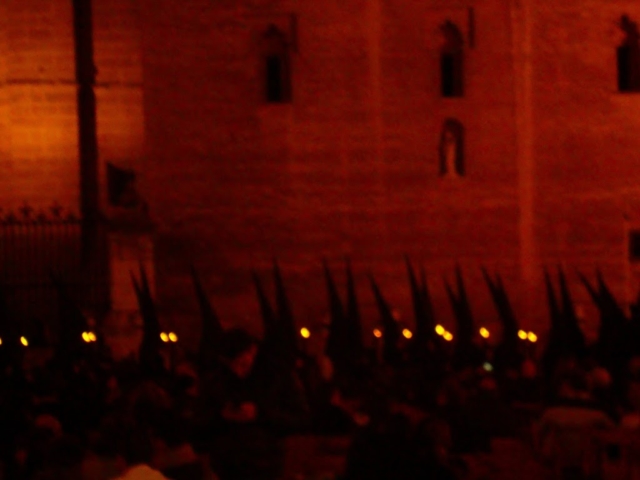
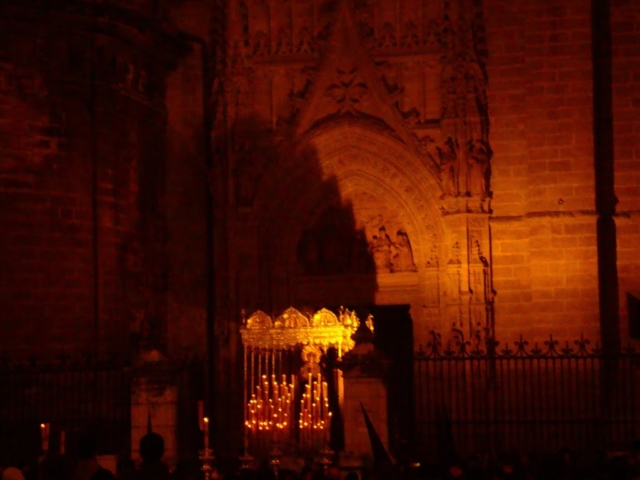
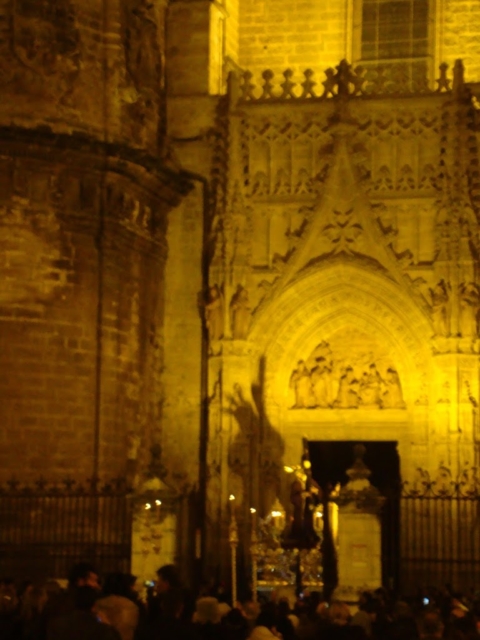
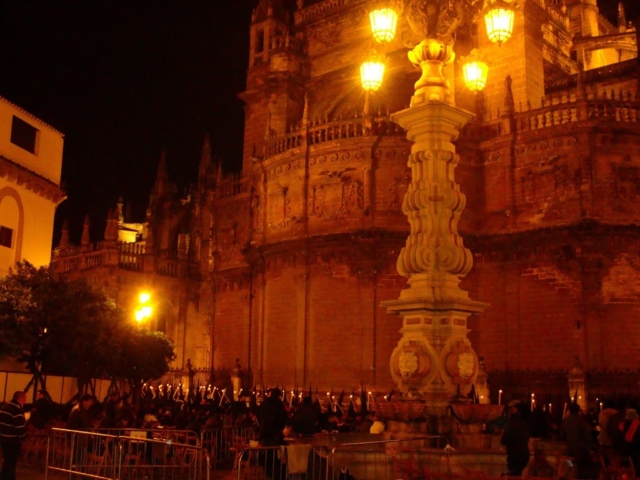
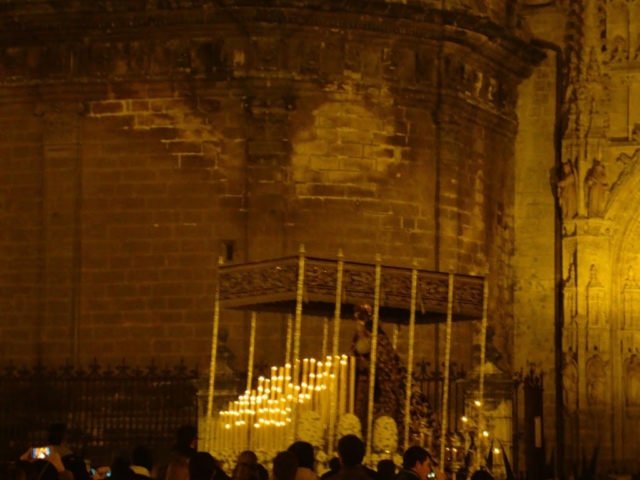
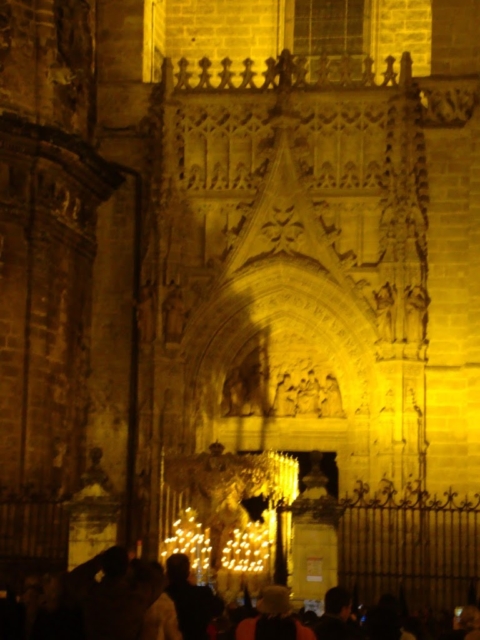
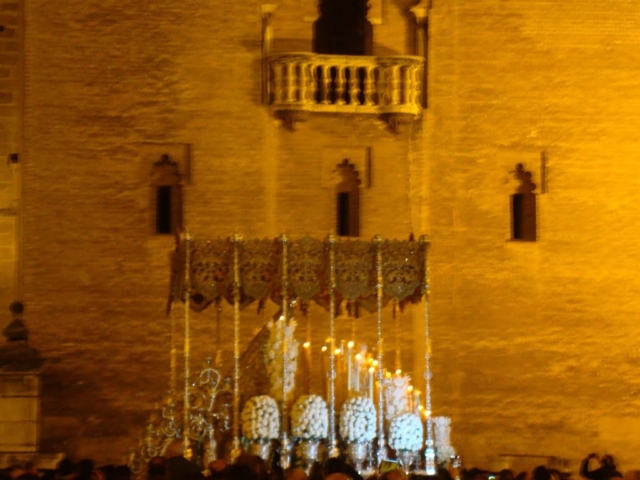
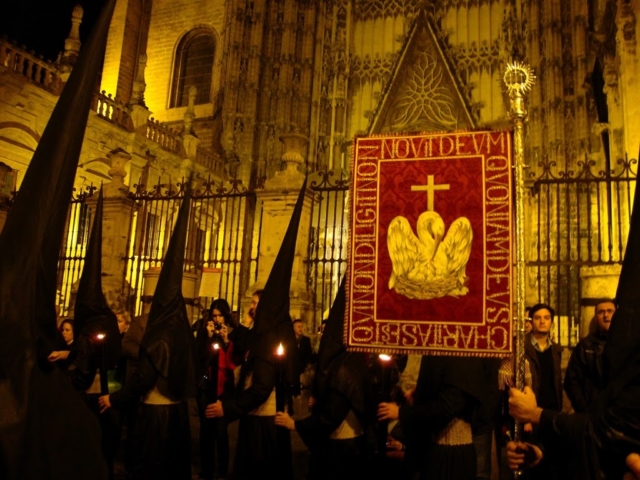
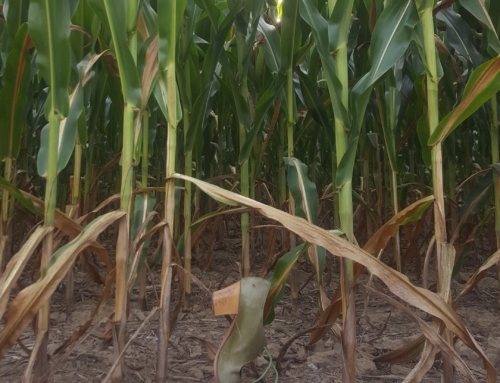

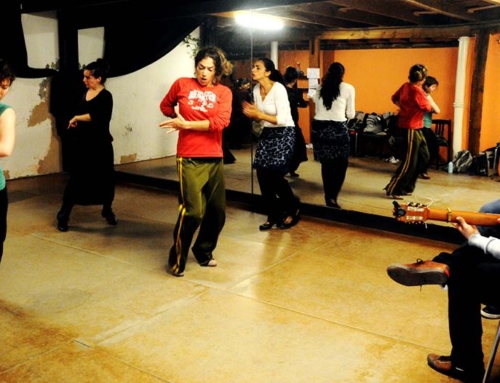
Leave A Comment